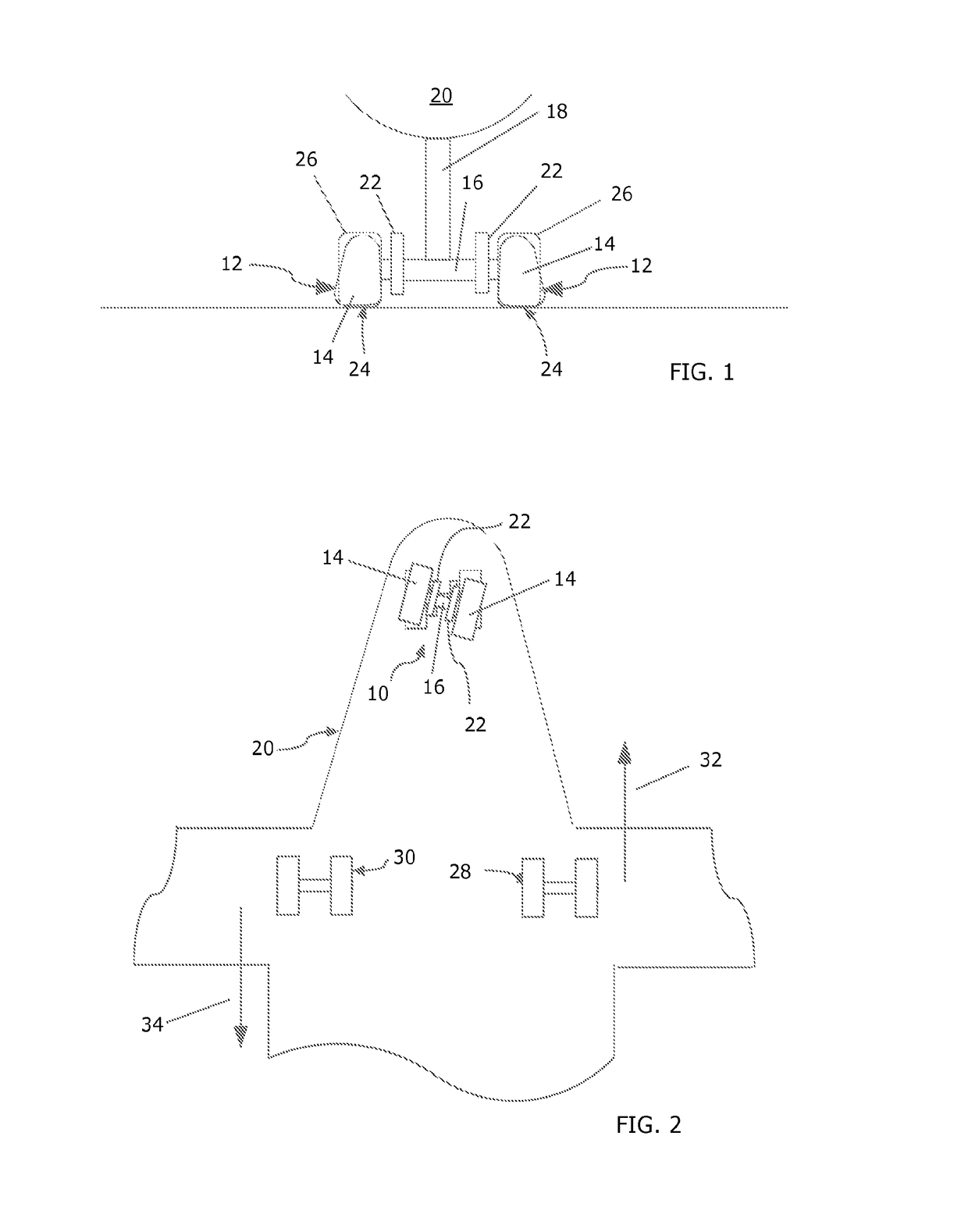Method of operating aircraft drive to move an aircraft under adverse ground conditions
a technology of aircraft drive and aircraft, which is applied in the direction of energy-saving operation measures, alighting gear, transportation and packaging, etc., can solve the problems of aircraft tires becoming stuck to the runway surface, runway deterioration, and runway surface deformation
- Summary
- Abstract
- Description
- Claims
- Application Information
AI Technical Summary
Benefits of technology
Problems solved by technology
Method used
Image
Examples
Embodiment Construction
[0019]A powered self-propelled nose wheel or other powered aircraft drive wheel is uniquely positioned to maneuver an aircraft in a variety of circumstances on the ground without assistance from external vehicles. The driver for the powered drive wheel optimally exerts sufficient power to move the aircraft at runway speeds, and its small size enables the driver to fit within the landing gear space. When weather conditions and, hence, runway conditions are adverse, particularly when the weather is cold, icy, or snowy, it is not unusual for aircraft tires to adhere either directly to the tarmac or to ice formed by water freezing between the tire and tarmac surface. The method of the present invention uses a powered self-propelled nose wheel or other wheel driver in conjunction with the aircraft steering and, when indicated, the aircraft brakes to apply enough force to a stuck tire to release it from its stuck position, thereby enabling the aircraft to move on the ground in a desired d...
PUM
 Login to View More
Login to View More Abstract
Description
Claims
Application Information
 Login to View More
Login to View More - R&D
- Intellectual Property
- Life Sciences
- Materials
- Tech Scout
- Unparalleled Data Quality
- Higher Quality Content
- 60% Fewer Hallucinations
Browse by: Latest US Patents, China's latest patents, Technical Efficacy Thesaurus, Application Domain, Technology Topic, Popular Technical Reports.
© 2025 PatSnap. All rights reserved.Legal|Privacy policy|Modern Slavery Act Transparency Statement|Sitemap|About US| Contact US: help@patsnap.com


